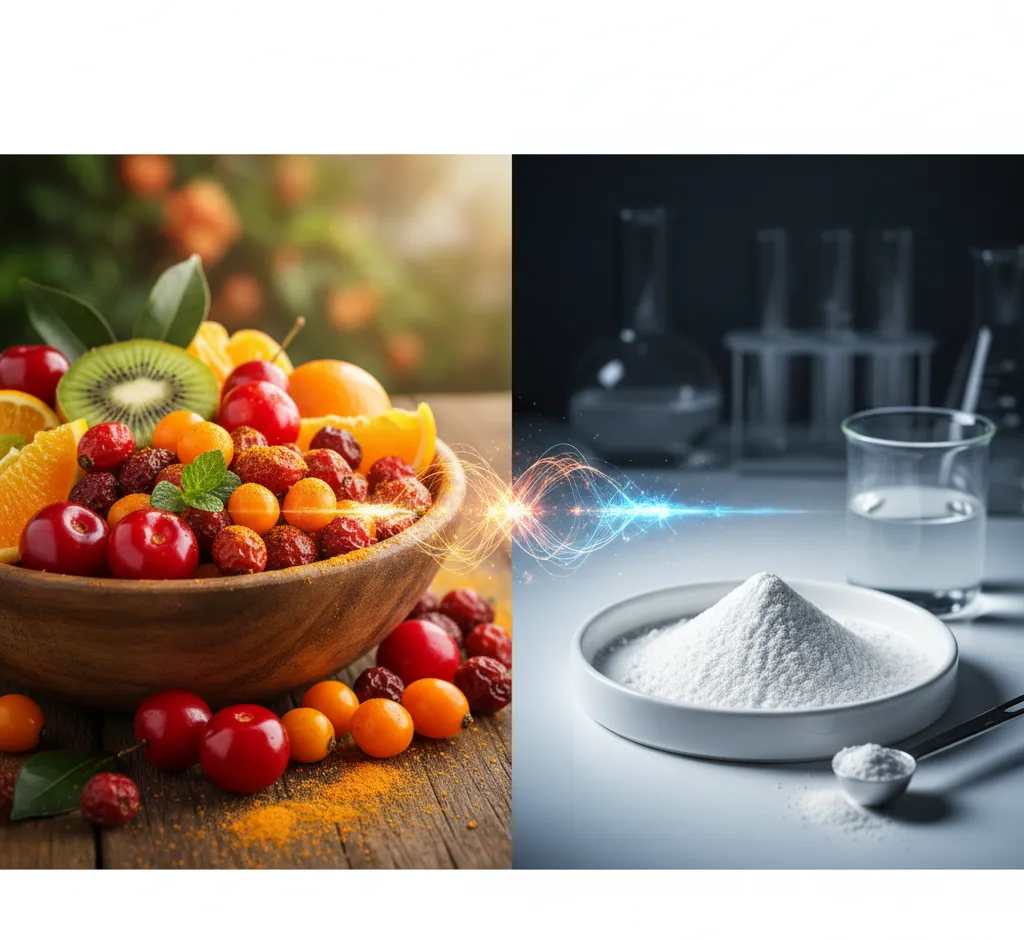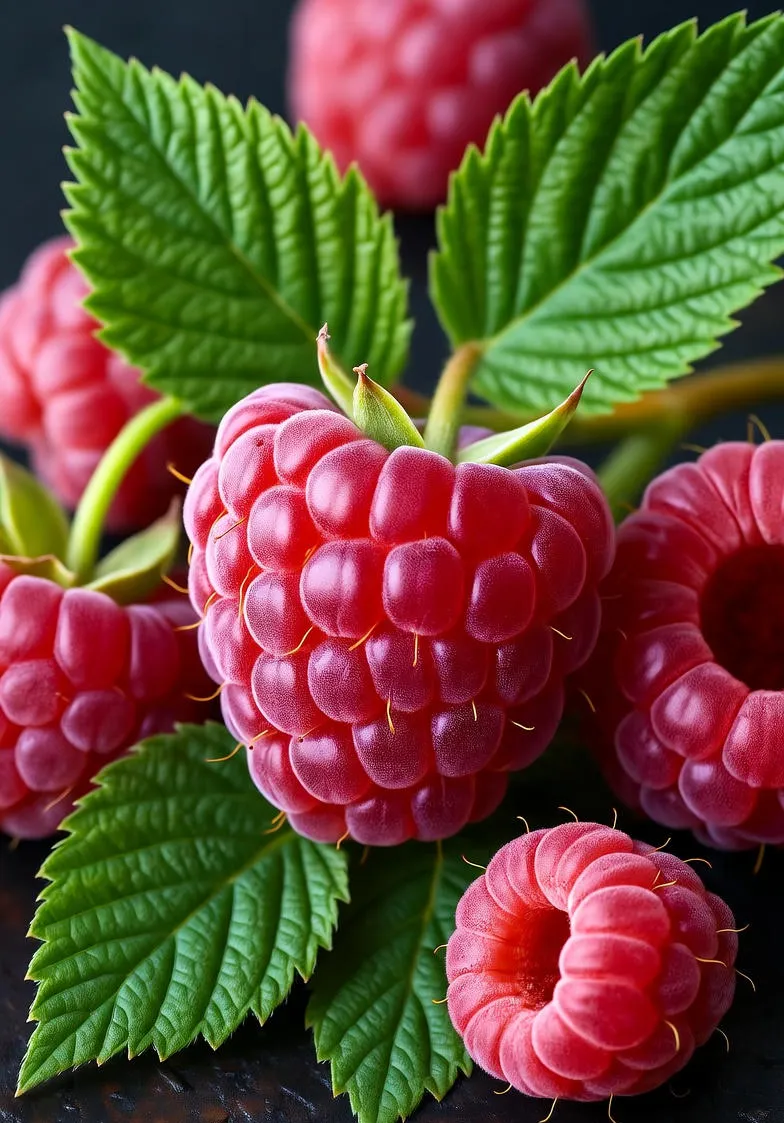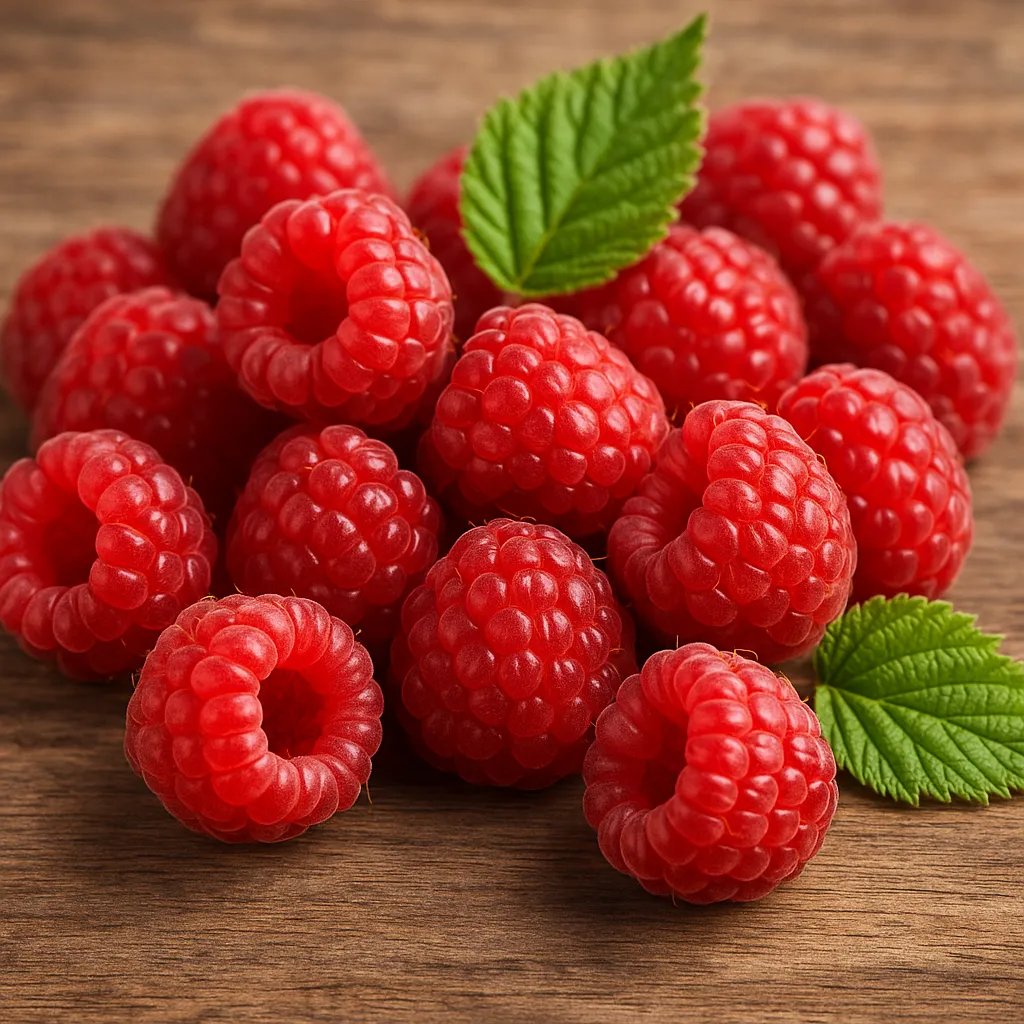The Ultimate Vitamin C Showdown: Nature's Complex vs. Lab's Isolate
Dive deep into the debate: Is natural Vitamin C from fruits like Acerola superior to lab-made L-Ascorbic Acid? Compare the chemical structure, bioavailability studies, and the 'Vitamin C Complex' to find the best supplement for your health needs.

The Ultimate Vitamin C Showdown: Nature's Complex vs. Lab's Isolate
Few nutrients spark a debate as passionate as Vitamin C. Found in abundance in a perfectly ripe orange or a vibrant bell pepper, its chemical name, L-Ascorbic Acid, is a household term. But when it comes to supplementation, consumers are faced with a fundamental choice: the isolated, mass-produced ascorbic acid of the laboratory, or the multi-compound matrix of whole-food, nature-sourced Vitamin C. Is one truly superior, or is this simply a case of clever marketing and wellness mythology? To answer this, we must delve into the molecular structure, the manufacturing process, the concept of the ‘Vitamin C Complex,’ and the often-conflicting science of bioavailability.
The Molecule: Chemically Identical, Structurally Alike
At the core of the debate is a single, undeniable scientific fact: the L-Ascorbic Acid molecule itself is exactly the same whether it is synthesized in a lab or grown in a fruit.
Molecular Mirror Image
The term 'Vitamin C' technically refers to L-Ascorbic Acid. In both synthetic and natural forms, this molecule consists of the same atoms—carbon, hydrogen, and oxygen—arranged in the exact same configuration. From a structural chemistry perspective, there is no difference. If you analyze a molecule of ascorbic acid from a pharmaceutical factory and one from a freshly picked acerola cherry, their chemical formulas ($C_6H_8O_6$) are identical. This is the foundation upon which the argument for synthetic equivalence is built: if the molecule is the same, the biological effect must be the same.
The Synthetic Process: From Glucose to Ascorbic Acid
The vast majority of commercial, supplemental Vitamin C is synthetic. This is primarily produced using the **Reichstein process**, a multi-step chemical synthesis that originated in the 1930s. The starting material is typically **glucose**, often sourced from corn starch (which may be genetically modified). The process involves a series of fermentation and chemical reactions using solvents, including **acetone** and **hydrochloric acid**, to isolate and purify the final L-Ascorbic Acid molecule. The resulting white, crystalline powder is 99.9% pure, isolated ascorbic acid.
The Argument for Nature: The Vitamin C Complex
While the synthetic molecule is chemically identical to the natural one, proponents of whole-food Vitamin C argue that in nature, **L-Ascorbic Acid never exists alone**. It is always nestled within a supportive network of other beneficial compounds, which they refer to as the Vitamin C Complex.
The Synergy of the Food Matrix
When you consume a citrus fruit, a camu camu berry, or a rosehip, your body is receiving more than just ascorbic acid. The natural form comes complete with:
- Bioflavonoids (Flavonoids): Compounds like Rutin and Quercetin are found naturally alongside Vitamin C. They are potent antioxidants themselves and are believed to act synergistically with ascorbic acid, potentially improving its efficacy and even helping to protect it from oxidation within the body.
- Enzymatic Co-factors: Some naturalists argue the presence of enzymes, like Tyrosinase, is crucial, as they are integral to the complete physiological function of the vitamin complex.
- P-Factors (Bioflavonoids): These compounds are historically linked to maintaining capillary strength, an action closely associated with Vitamin C's role in collagen production.
- Other Micronutrients: Natural sources provide a spectrum of other vitamins, minerals, and polyphenols that contribute to the overall nutritional value and absorption environment.
The core of the **'Natural is Better'** philosophy is that this intact **food matrix** is what the human body is designed to recognize and utilize optimally. When the ascorbic acid is chemically isolated, it is stripped of its natural co-pilots, turning a 'complex food factor' into an 'isolated chemical' that may behave differently in the body.
The Scientific Verdict on Bioavailability
To move past philosophical arguments, we must look to the science of **bioavailability**—the degree to which a nutrient is absorbed and becomes available for use in the body's metabolic processes.
Human Steady-State Studies: A Tie
The overwhelming majority of well-designed, **steady-state human studies**—where researchers measure the level of Vitamin C in plasma or white blood cells (leukocytes) over a period of time—have found **no significant clinical difference** in the bioavailability between synthetic L-Ascorbic Acid and naturally occurring Vitamin C from sources like orange juice, orange slices, or cooked broccoli.
“All steady-state comparative bioavailability studies in humans have shown no differences between synthetic and natural vitamin C, regardless of the subject population, study design or intervention used.”
The body's primary mechanism for absorbing Vitamin C (via specific transporters) appears to recognize the L-Ascorbic Acid molecule regardless of its origin.
The Nuance: Pharmacokinetic and Functional Differences
However, the picture is not entirely black and white. Some studies introduce nuance:
- Transient Differences: A few pharmacokinetic studies (measuring concentration over a short time after a single dose) have shown **transient, small differences** in absorption rates, suggesting the bioflavonoids may delay or alter the initial uptake curve, even if the total amount absorbed over a day is the same.
- Increased Efficacy in Specific Functions: Some research suggests that the natural food complex may provide functional benefits beyond simple plasma levels. For example, some studies found a food-complexed Vitamin C to be more effective than isolated ascorbic acid in **reducing oxidative stress** markers or **protein glycation** (a process involved in aging and diabetes) in human and animal models. This supports the idea that the accompanying bioflavonoids are adding a synergistic boost to the overall antioxidant effect.
- Degradation: The natural food matrix may help protect the L-Ascorbic Acid molecule from rapid degradation. Studies on citrus have shown that the Vitamin C in whole fruit decomposes more slowly than isolated synthetic ascorbic acid.
The Cost vs. Purity Factor
From a purely pragmatic standpoint, the differences are clear:
- Cost: Synthetic L-Ascorbic Acid is incredibly inexpensive to produce, which is why it is the dominant form in mass-market supplements, fortified foods, and beverages.
- Purity: Synthetic C is a pure isolate. This can be beneficial for specific high-dose therapeutic uses where a precise, high concentration of the single active molecule is desired.
The Practical Impact: High Dose vs. Daily Requirement
The choice between natural and lab-made C is often best framed by the user's goal:
→ Preventing Deficiency (RDA: 75-90 mg)
If your goal is simply to meet the **Recommended Dietary Allowance (RDA)** and prevent deficiency (scurvy), the source is largely irrelevant. A 75mg dose of synthetic L-Ascorbic Acid is scientifically equivalent to the 75mg found in a kiwi or bell pepper.
→ High-Dose Supplementation (1,000 mg+)
At high supplemental doses, the functional and practical differences become more relevant:
- Digestive Comfort and pH: Plain synthetic ascorbic acid is highly acidic. Taking large doses on an empty stomach can cause significant digestive distress, diarrhea, and stomach upset. This led to the creation of **Mineral Ascorbates** (like Calcium Ascorbate or Sodium Ascorbate), often called "buffered C," which are non-acidic and much gentler on the stomach.
- Potential for Enhanced Benefit: If you believe in the synergistic effects suggested by certain functional studies, a whole-food supplement (sourced from Acerola, Camu Camu, Amla, etc.) provides the Ascorbic Acid with its full entourage of flavonoids and other cofactors, potentially offering a broader spectrum of antioxidant protection and benefits.
When selecting a whole-food supplement, it is crucial to check the ingredient list. Many products labeled as 'natural Vitamin C' are actually a blend of inexpensive synthetic Ascorbic Acid *with* a small amount of a whole-food extract (like a rosehip powder) added for marketing purposes. A genuine whole-food supplement will list the fruit or botanical source as the primary ingredient and the Vitamin C content will naturally reflect what is in the extract, not a chemically standardized isolate.
Conclusion: An Integrated Perspective
In the final analysis, the battle between nature and the lab is less a war and more a debate over *completeness* versus *cost-effective isolation*. For the consumer, the choice comes down to personal priorities, budget, and philosophy.
- The Lab-Made Vitamin C (L-Ascorbic Acid): Is chemically correct, highly concentrated, the most affordable, and perfectly effective for basic nutritional requirements and preventing deficiency. It is the gold standard for clinical purity.
- The Natural Vitamin C Complex: Offers the full spectrum of phytochemicals as intended by nature. While large-scale human bioavailability studies generally do not show an edge in plasma concentration, the anecdotal evidence and small functional studies supporting the synergistic benefits of the 'food matrix' are compelling for those seeking a holistic, whole-food approach to supplementation.
Ultimately, whether you choose a pure crystal powder or a camu camu berry capsule, the most important factor is consistent intake, as Vitamin C is water-soluble and not stored in the body. The best Vitamin C is the one you remember to take daily.


